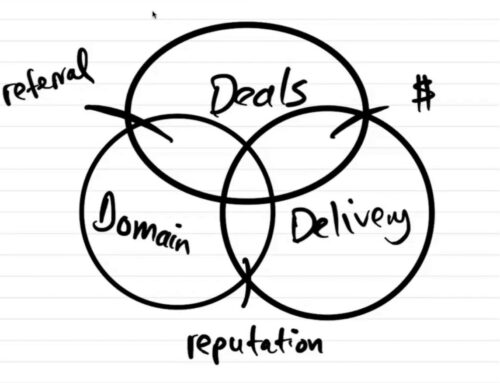The Formula For Evaluating Start-Ups with Sergey Sundukovskiy
If you were considering joining a start-up as their CTO would you have a formula to evaluate its potential? Our guest on today’s CTO Studio does and it stems from his years as a CTO, an advisor and mentor in the field.
Sergey Sundukovskiy is the CTO, CPO, co-founder of Raken. He’s also a mentor, advisor and father of three.
Sergey and I have a great conversation about the formula for evaluating start ups and how to manage and keep healthy development teams. Join us as we dive into those subjects and more on this episode of CTO Studio.
In this episode, you’ll hear:
- What is the benefit of being both CTO and CPO (Chief Product Officer)?
- What are the two sources for ideas?
- How has their product changed since its inception?
- Why compromise doesn’t always work to solve disagreements.
- Should all CTOs mentor?
- And so much more!
We start with a discussion about Raken: what it is and who it serves. Raken is a field management solution. They serve the construction industry by helping supervisors and job foremen keep track of what is going on on the construction site. So often the people in charge realize there is a problem when the job is running behind schedule and off track, Raken helps avoid that scenario.
Raken helps construction companies to keep the construction projects on time and on target through daily documentation and labor/project insights, as well as serving as a Worker Time Management app for payroll purposes. Sergey explains what it does in more detail: If you have ever been on a job construction site you know jobs are broken down into roughly 3 separate buckets. Prep time is one bucket, the second bucket is the actual build stage of the project and the last bucket is the transition stage when you are completing the project.
They primarily serve the building stage and the transition stage. In the building phase you need to be sure you are on time and things don’t need to be adjusted.
Basically Raken is project management software for the construction industry projects focused on field management tools. Normally, construction projects are driven by the management office in the office/field trailer and then what happens on the job site. The project gets conceived in the office and planned in the office. Raken’s approach is to service the field. They serve the field workers so the field workers can keep track of activities, and to do so in a simple and easy-to-use manner.
Raken helps Superintendents to document what is being done as it is being done, rather than having two hours they would normally have to use at the end of the day to make note of the progress on the job.
Sergey says they are staying focused on the construction industry and not branching out right now. I was curious to know how Raken came about – where and how did he get the idea?
He was a late stage co-founder for the company so the idea wasn’t his. But in general ideas come from two different sources. The first is industry insiders who have been working in their field forever and eventually start their own business to do a particular thing in a better way.
The second source is industry outsiders who see a better way to do something that others haven’t seen.
Their co-founder, Kyle, fell into the second category: he decided to create Raken after recognizing that the construction industry lacked a reporting tech solution that could alleviate major pain points. So Kyle set out to fix that with Raken.
As a CTO with a rich history in software development, management leadership and previous CTO roles, how did Sergey know he wanted to join Raken?
He met Kyle about a year into his 2-year earnout from his previous company. At that point, Sergey knew he wanted to join another start up. He knew he had three choices: he could form his own start up, join an existing one or stay with a corporate job.
He had a specific approach to evaluating opportunities, and it is based on his experiences as a mentor and advisor through incubators and accelerators. His system is more like that of an investor and it examines three areas:
- Look at the idea.
- Look at the market.
- Look at the people involved in the company.
Raken checked all three boxes for him.
Next we talk about how Raken has changed before discussing the viral component of the app. How did they use it to bring in subcontractors?
It’s about realizing how the market is broken down. If you look at the market itself there are about 21% of the general contractors and 79% of the subcontractors – and that is exactly how it breaks out on job sites. 20% of the work is done by general contractors and 80% is done by subcontractors/someone else.
From the decision-making point of view, general contractors typically makes a decision in terms of software used to track the project. But they also have lots of subcontractors and these subcontractors if they like the software on one job they are going to take it and recommend it to other future job supervisors and general contractors.
And that is the viral component: subcontractors are required to use Raken by one general contractor, they like the experience and then recommend it to future general contractors on new job sites.
Raken saw linear growth of general contractors using their app, and exponential growth by subcontractors.
We transition into Sergey telling us how they keep harmony when they disagree, his company PushPoint which was sold to CapitolOne, why it’s important to be physically and mentally fit in order to run a successful business. And we wrap up with his thoughts on the SoCal tech scene. Listen in to hear our take on those topics and more on today’s CTO Studio.
Episode Resources:
Share This Story, Choose Your Platform!
Related Podcasts




